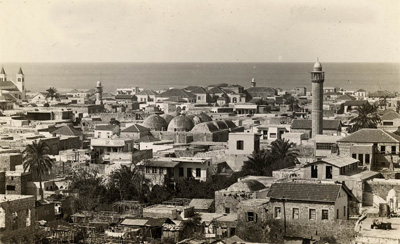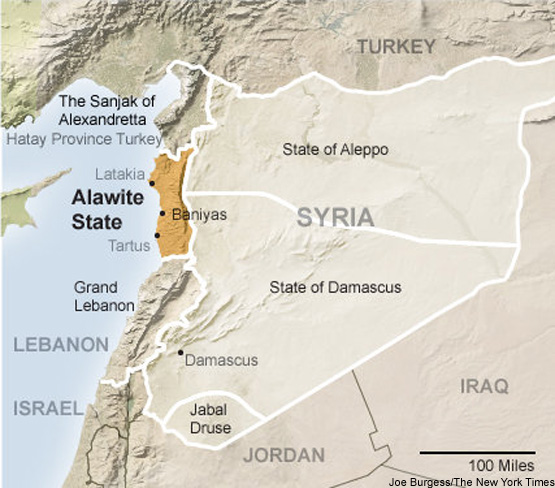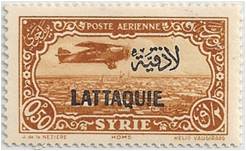ALBUM – view my Latakia Album
TRANSITION CHART – Syria/Lebanon area Transition Chart
Fast Facts
Region: Middle East / Central Asia
Group: Syria Area
Classification: League of Nations Mandate (France)
Prior Regime: Alawite State
Key Dates:
1920, Apr 25 – The region of Syria and Lebanon were placed under French Mandate
1922, Jul 1 – The Alawites were placed within the Federation of Syria
1924, Dec 1 – Alawite State was created as they seperated from the Federation of Syria.
1930, Sept 22 – Renamed to the Government of Latakia
1936, Dec 5 – Latakia joined the Syrian Republic (became effective in 1937)
Following Regime: Syrian Republic
Scott Catalogue: (Latakia) #1-22, C1-C11, J1-J2
Pick Catalogue: none
History

The Alawites are located in the mountainous coastal region of central Syria.
The Alawite people are known to follow a particular “secretive” sect of Shia Islam, and for centuries maintained their distinction in this small corner of the Ottoman Empire. Through much of the rule of the Ottomans, most of the Alawites remained as peasants, primarily dominated by majority Sunnis in the rest of Syria and the Empire. While initially separated in the 1920 mandate, as the French began to consolidate power in the region, the Alawites were combined with Damascus and Aleppo into the Syrian Federation in 1922.
When the federation was solidified into the “State of Syria” on 1 Dec, 1924, the Alawites refused to be part of the new state, instead choosing to create their own identity by forming the Alawite State. As the Alawites were somewhat separated from Syria, both in geography and religion, they had little participation in the unsuccessful “Great Syrian revolt” of 1925-1926 against the French.
Sunni landowners living in the more urban areas of the state, began advocating joining a greater Syria state, while the more rural Alawites supported continued separation. In a French concession to Arab nationalists, Alawite State was renamed the “Government of Latakia” on 22 Sept, 1930. As Arab nationalistic fervor continued to grow, the voice of the Sunnis were able to marginalize the Alawite protests and eventually on 5 Dec, 1936 Latakia re-joined Syria. Full independence was granted to Syria in 17 April 1946, as the mandate period came to a close.

Stamps
 ALBUM
ALBUM
For Alawite State, stamps of France and Syria were overprinted and surcharged France and Syria in both French (Alaouites) and Arabic (العلويون) and used for postage. When the state transitioned to become the Government of Latakia, the practice of overprinting Syrian stamps for postage continued.
Beginning in 1931, 22 stamps of Syria were overprinted in red or black with the new name: “LATTAQUIE” in French and “اللاذقية” in Arabic. Additionally, 11 Air Post and 2 Postage Due stamps were also issued with the same overprints.
Since all Stamps from Latakia are overprints, there are some rarely seen variations, such as inverts, double overprints, and variations in color.
Stamps of Latakia were replaced with stamps of Syria in 1937.
Banknotes
The Lebanese-Syrian Livre (Pound) were used throughout the French Madated area of Syria/Lebanon.
Links
French Mandate of Syria and Lebanon
Latakia – bigblue 1840-1940 blogspot




